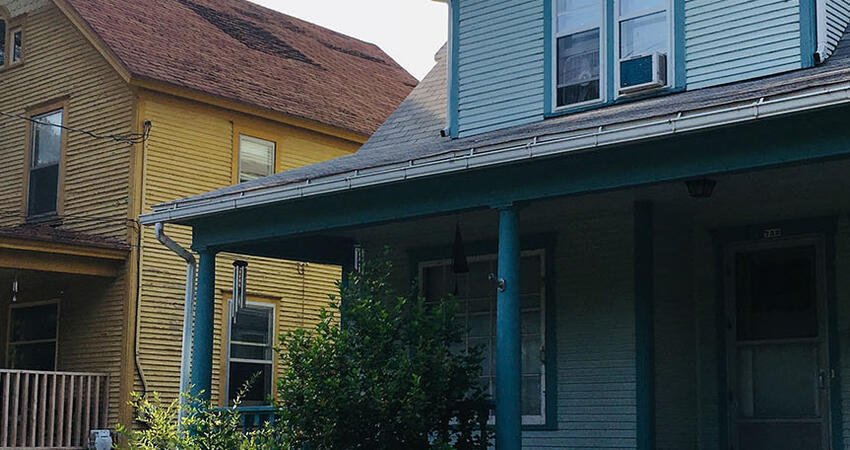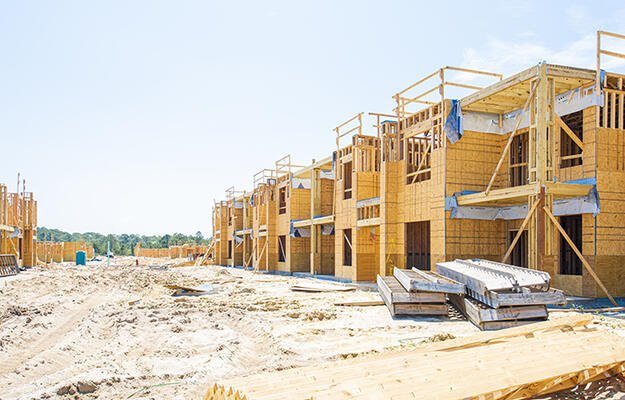
Q&A with Andi Crawford, Director of Neighborhoods and Citizen Engagement for the City of Lansing, Michigan
by Martha Fedorowicz
In the past decade, city governments across the country have begun to elevate the work of neighborhood development to stand-alone neighborhoods departments rather than situating them within departments for community services, economic development, and planning. In Lansing, this elevation has led to the creation of the Department of Neighborhoods and Citizen Engagement, led by director Andi Crawford. In this Q&A, we talk to Andi about why this shift was important for Lansing and how the city thinks about housing as part of its broader neighborhood development and resident engagement strategy.
Lansing has a population of about 114,000 people and is also a Rust Belt city. How do small- to midsize cities like Lansing think about housing priorities at the city level, and how does Lansing’s history shape those priorities?
Being in the category of Rust Belt city, or “legacy city,” what we have as a tremendous asset is affordable opportunity for homeownership. Our housing concerns are really different from other urban areas that have a very different set of housing challenges. We have an aging housing stock. We have lots of homes that are centuries old, which can be a tremendous asset but also a great challenge. We have homes that need a lot of work for lead remediation, mold, and asbestos. But we’re an affordable city, and so we can get people into homeownership positions. We really look at that as an asset as we think about housing from the city level.
The Department of Neighborhoods and Citizen Engagement was just created by the new mayor, mayor Andy Schor, in 2018. Before that, community development work had been done under the Department of Economic Development and Planning. Why did the mayor decide that this needed to be a separate department? More specifically, how is the work that a neighborhoods department does different from other departments, like a planning department or a community services department?
When Mayor Schor came in, he wanted to take neighborhoods out from underneath another department and put it on equal footing as things like economic development, police, and fire. Making us a full department was a real statement on his behalf about the importance of neighborhoods and the resident experience within the city. What we’re trying to do as a broader city objective is to help understand the intersection of those departments. Most cities are looking at challenges, trying to figure out how to get cross-departmental work happening, understand the intersection, look for efficiencies, and find performance-based outcome metrics. The creation of a neighborhoods department does that. It takes a horizontal slice across the city and sees how things intersect.
The reality is, if you’re a resident in a neighborhood, you don’t care whose responsibility it is to ensure that your neighborhood is safe and that services are working. We try to take a resident-focused perspective and think about all the services that a city provides and all the other things that happen in our neighborhoods that aren’t provided by the city—things like schools and the business community—and to see how all of those things intersect to affect the resident experience and quality of life. Our job is to hopefully bring those together. An example of this is that last week, we went out into a neighborhood and took the professionals who are responsible for working in that neighborhood. We brought a code compliance officer and community police officer. It won’t be surprising to people who work in city government that those people have never met each other before, and yet they are responsible for very significant and similar outcomes in that neighborhood. We do a lot of work to try to connect and magnify existing efforts in the city.
In your opinion, what is the role of a neighborhoods department in housing?
I think where we can be helpful in the housing discussion is to understand not just an individual structure or specific home—the brick and mortar—but how it fits into the broader neighborhood as a whole. We look at whole neighborhoods to see what the resident experience is like. We don’t just talk about how a home fits into a vacant lot but whether that is the highest and best use of that lot. We try to connect the people to the project and understand what a neighborhood wants, what it needs, what existing residents want, and what future residents might want. We’re trying to balance all of that.
Housing does mean a shelter, but that shelter is situated within somewhere. So housing is also neighborhoods. We think about what makes that shelter a place where people want to be and where they can be safe, comfortable, and have basic needs met, as well as much broader needs met. Can they thrive there? Can that house, or shelter, or place where they reside, be part of helping them reach their broader goals in life? Houses and housing are never just houses and housing. They’re economic mobility, health, safety, and all of those things that we care about for people.
What outcomes are you trying to achieve and how do you plan to measure them?
These are tough things to quantify and measure. We look at some metrics that gauge neighborhood health—there are the obvious things like crime rates, whether the neighborhood is growing in population or decreasing in population. We have a real eye on the age of the population—are families locating into this area? Is there an exodus? A real statement about neighborhood health is whether or not people view it as a place to raise a family. We also try to keep a measure of engagement, how many people are involved, how many show up for events, what sort of engagement input we get. Those are measurements that are important programmatically. But what’s more important is the robust health of that neighborhood.
We know that certain neighborhoods have very strong levels of social cohesion and engagement. How do you elevate these positive outcomes to the city level while also maintaining hyperlocal ownership of the engagement process and the outcomes that come out of it?
What I find fascinating is that in any geography, no matter how small, down to the smallest intersection, there are dozens and dozens of different opinions, needs, perspectives, goals, hopes, and dreams. No matter how small of a place you’re working with, there’s going to be layers of complexity involved there. We think of this department as the city civics teacher. We want to make sure people know where their efforts are going to be most useful. There’s nothing more frustrating for people than choosing to get involved and finding that the process has already been baked. It’s frustrating if they feel like the decisions have already been made and they don’t have any input. What we take seriously is how to help communicate at what point you can make a meaningful difference for how something is going in the community—explaining things like committees and board structures, why a neighborhood group can be so important. We spend a lot of time teaching how to be involved. That’s one of my favorite things. At the city level, you can have a big impact on things that happen. You can sit on boards and commissions. But many people don’t know that the drain commission, for example, makes serious decisions about the community. It doesn’t sound super sexy, but if you care about the environment and development, that’s a great place to put your efforts. We try to help to demystify the process and explain where your time is going to be most impactful. That’s at the top of our priority list.
As you make your yearly strategic plan and think about how to engage residents, how do you ensure community residents benefit equitably from placemaking activities? In your interactions with Lansing residents, what concerns do you hear most often about these placemaking activities?
Some people think placemaking is murals, art, energy, cool things happening, a vibe. For a lot of people, placemaking is an effort to get at public safety. We think of this like a manual transmission car. We do need more enforcement in certain places and also placemaking—it’s about shifting many components together in harmony to make the car move. One strategy we’ve employed to look at equity is understanding that different groups engage differently. What might work really well as a community engagement strategy in one neighborhood might not work at all in another neighborhood. We’ve tried to open up the definition of what a “neighborhood group” is. We’ve tried to expand the definition of “neighbor.” It’s not just someone who comes to a meeting. It’s not just someone who owns a house. If you’re in the neighborhood, you’re a neighbor. We recognize that people engage differently, have different levels of interest, and have different goals. It’s not one-size-fits-all, and there’s not one way to be involved. We’re trying to offer different options for people.
In your role, who do you partner with and in what areas do you partner? Why do you think these partnerships can be fruitful?
Our working mantra is that our job is to convene, capacity build, and connect to resources. The Three C’s. But most of our work is about convening others. We’re in a unique position in the community to use the office of the mayor and city hall to say we’re thinking about something. We’re not going to program it, but we’re going to call the meeting and bring folks to the table. That convening power can’t be understated. We can also convene over time and apply the administrative backbone to support a coalition. As we capacity build, we can also bring the resources of the city and connect you to other resources or partnerships that are available. We build partnership within the city and also external to the city and think about who has to be involved. People are so hungry for the city to be a partner; they need the city to be a partner. That’s where we get a tremendous response because folks have been waiting for us to get there. If you don’t have someone whose responsibility it is to do that, those connections don’t get made.
Note: The author of this article was previously employed by the City of Lansing’s Department of Neighborhoods and Citizen Engagement.
Photo by Martha Fedorowicz


